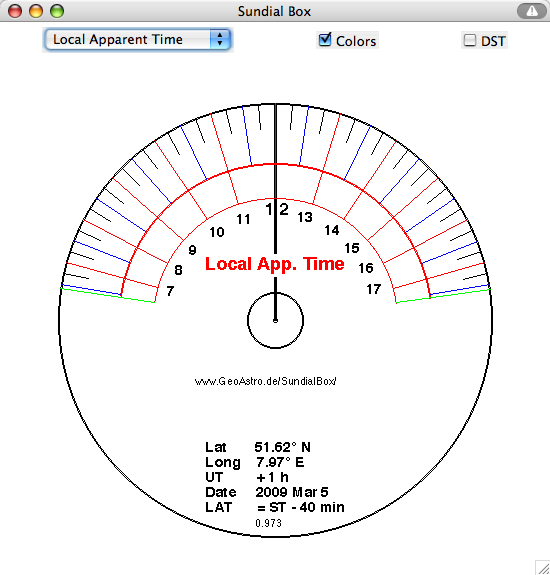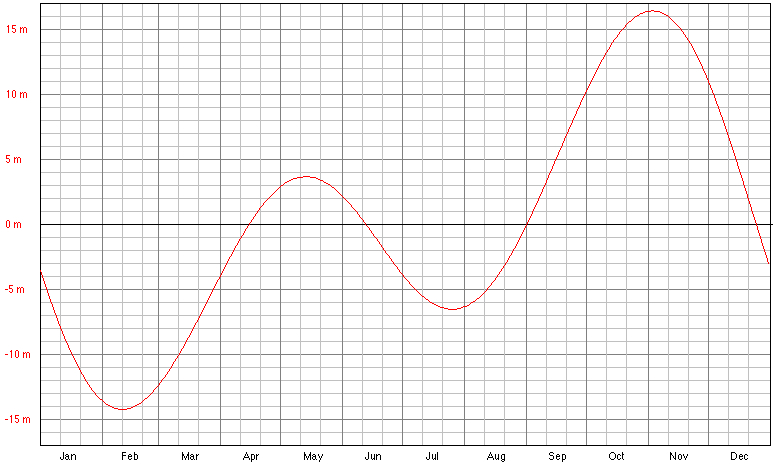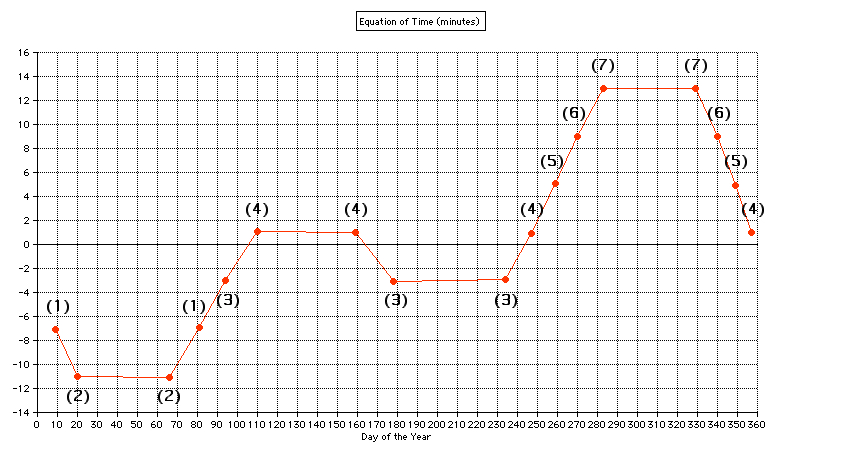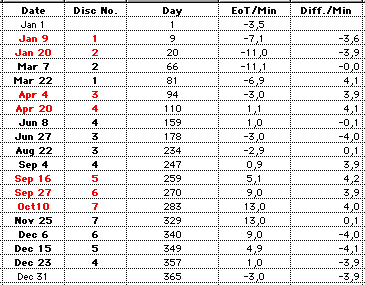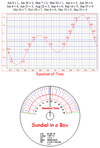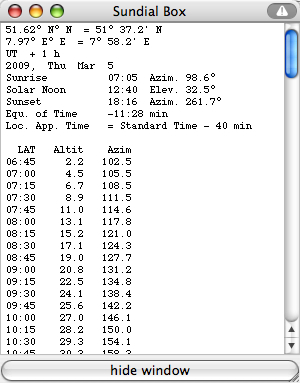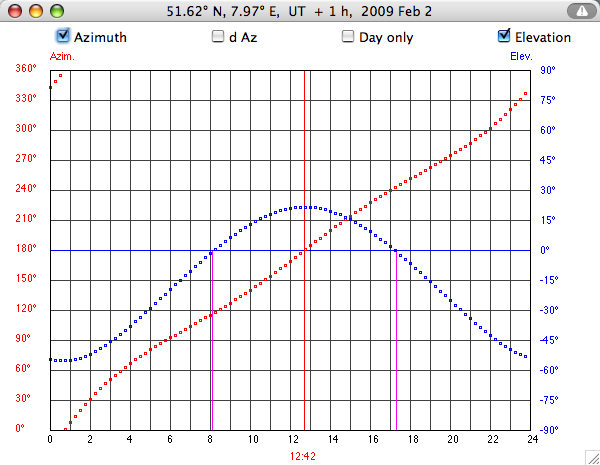|
|
GeoAstro Applets |
Astronomy |
Chaos Game |
Java |
Miscel- laneous |
Sundial in a Box
Applet
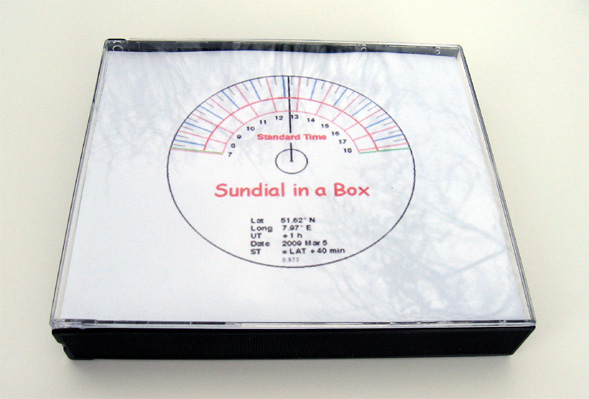

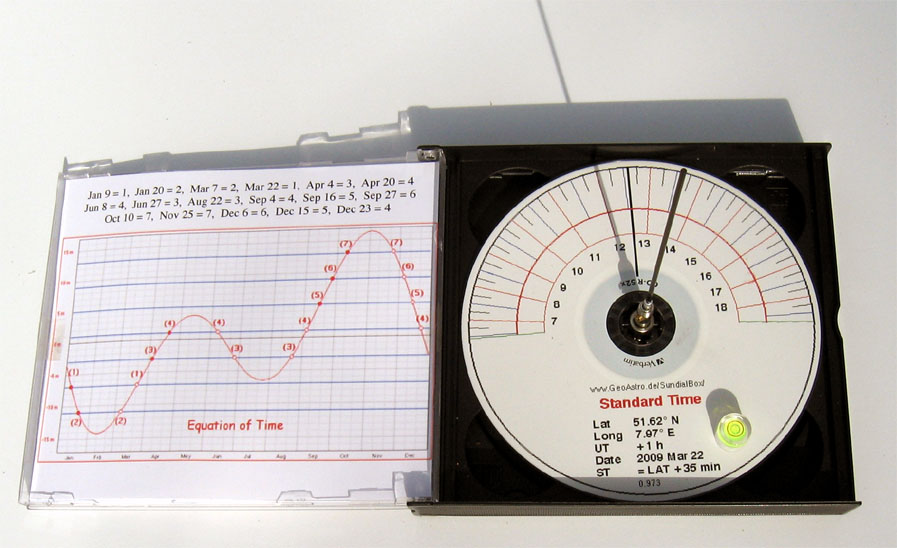
The sundial ready for use.
|
What you need:
The sundial is
using a CD case (for 4 discs). You will need to print
and glue the hour scale to a CD disc (or use a
printable disc) and to mount a gnomon in the center
casting a shadow to read the current time. shim(s), 4 mm
socket, 4 mm banana
plug, 1.5-2.0 mm
rod (gnomon).

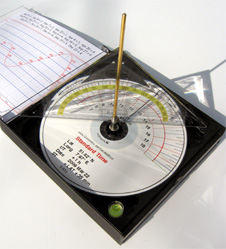 |
|
| The socket, plug, and gnomon at the center. | Aligning the disc (by a bubble level), and the gnomon. |
